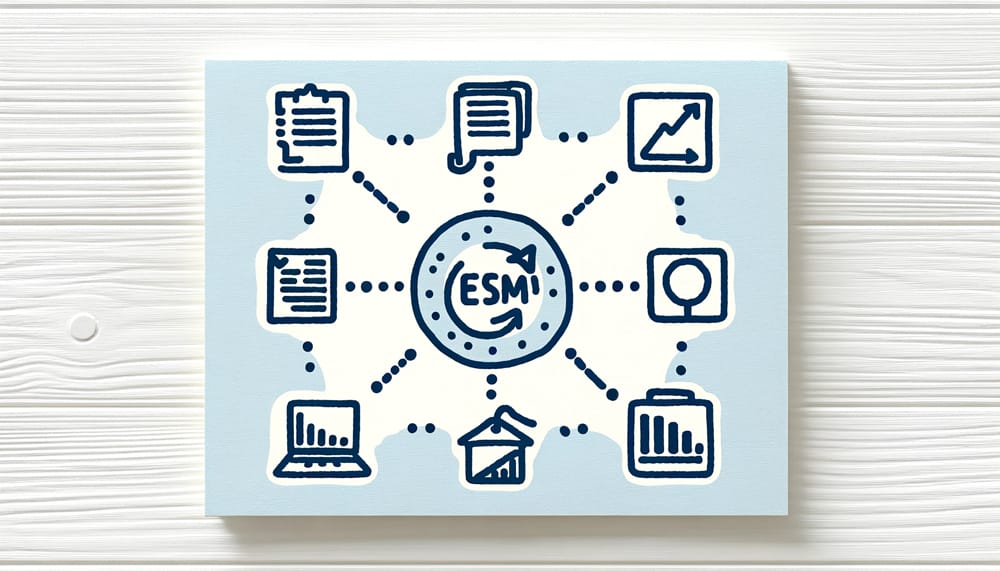Introduction
The Essence of Participant Selection in Experience Sampling Method (ESM)
In the realm of Experience Sampling Method (ESM) research, participant selection is not merely a step in the process; it’s the cornerstone that upholds the integrity and relevance of the study. With ESM’s unique focus on capturing individuals’ experiences and emotions in real-time, the selection of participants becomes a critical task that researchers must navigate with precision and thoughtfulness.
“Selecting the right participants in an ESM study is akin to casting the right actors for a movie. Each choice can dramatically alter the narrative and its impact.”
For further insights into the foundational aspects of ESM, Introduction to Experience
Sampling Method (ESM) provides a comprehensive overview.
Understanding the Impact of Sampling on ESM
Sampling in ESM isn’t just about numbers; it’s about capturing a diverse and accurate representation of experiences. The choice of sampling technique directly impacts:
-
- Generalizability: How well the findings can be applied to the broader population.
-
- Validity: Ensuring that the study measures what it’s supposed to measure.
-
- Reliability: The consistency and dependability of the data collected.
By integrating insights from articles like Designing an ESM Study: Key Considerations and Steps, researchers can grasp the nuances of ESM study design and how participant selection plays a pivotal role.
The Importance of Choosing the Right Sampling Technique
Selecting an appropriate sampling method is not just a methodological choice, but a decision that can define the quality and applicability of the research. Each sampling technique carries its own set of strengths and limitations. The decision should be guided by:
- Study Objectives: What are the goals and what kind of data is required?
- Population Characteristics: Who are the individuals that the study aims to understand?
- Resource Availability: What are the logistical and financial constraints?
As highlighted in resources like Setting Up ESM Data Collection: Tools and Best Practices, the integration of the right tools and techniques is critical for effective data collection in ESM.
In conclusion, the selection of participants in an ESM study is a multifaceted decision that requires careful consideration of the study’s goals, the characteristics of the target population, and the practicalities of data collection. This initial step sets the stage for the quality and success of the entire research endeavor.
Understanding Sampling in ESM

Defining Sampling in the Context of ESM
In the specialized field of Experience Sampling Method (ESM), sampling refers to the systematic process of selecting individuals from a target population to participate in a study. This process is pivotal in ESM due to its emphasis on capturing real-time, in-the-moment experiences of participants.
“In ESM, sampling isn’t just about who we study; it’s about capturing the myriad hues of human experience.”
Sampling in ESM must be approached with a clear understanding of the study’s objectives and the population it aims to represent. This is not merely a logistical task; it’s a strategic decision that shapes the very foundation of ESM research.
The Impact of Sampling on Study Outcomes
The choice of sampling technique in ESM can significantly influence the study’s outcomes in various ways:
- Representativeness: Ensuring that the sample mirrors the diversity of the target population, thereby allowing findings to be more accurately generalized.
- Bias Reduction: Proper sampling methods help minimize biases, which can skew the study’s results and interpretations.
- Data Quality: The method of sampling influences the richness and authenticity of the data collected, impacting the study’s overall quality.
“The right sampling method in ESM is like choosing the correct lens for a camera. It determines what we capture and how we interpret it.”
For instance, as detailed in Analyzing ESM Data: A Step-by-Step Guide, the analysis of ESM data heavily relies on the representativeness and quality of the sample. A well-chosen sample ensures that the analysis yields insights that are both accurate and meaningful.
Sampling: The Backbone of ESM Research
In essence, sampling in ESM is more than a mere preliminary step; it’s the backbone that supports the entire research structure. It influences every aspect of the study, from data collection to analysis and interpretation. As such, the selection of a suitable sampling method should be aligned with the study’s goals and the nature of the population being studied.
Incorporating insights from resources can further illuminate the role of sampling in specific research domains, demonstrating how tailored sampling approaches can significantly enhance the relevance and impact of ESM studies.
In summary, the process of sampling in ESM is a critical determinant of the study’s success. It shapes the scope, direction, and effectiveness of the research, making it a vital aspect that requires careful planning and consideration.
Random Sampling Techniques
![]()
Explaining Random Sampling
Random sampling stands as a fundamental technique in the sphere of Experience Sampling Method (ESM) research. It is characterized by its simplicity and fairness: each member of the target population has an equal and independent chance of being selected for the study. This method is akin to a lottery system where every individual holds an equal likelihood of being chosen, irrespective of their characteristics.
“Random sampling in ESM is the epitome of democratic selection – every voice has an equal chance to be heard.”
This approach is particularly beneficial in studies aiming for wide-ranging insights and generalizable results across diverse populations.
Advantages of Random Sampling
The use of random sampling in ESM offers several key advantages:
- Reduction of Bias: It minimizes selection bias, ensuring that the sample is not skewed towards a particular subset of the population.
- Enhanced Generalizability: Findings from a randomly sampled group are more likely to be representative of the broader population, enhancing the external validity of the study.
- Simplicity and Clarity: The process is straightforward and easy to understand, which can be advantageous in explaining the research methodology to stakeholders or in peer-reviewed publications.
“Random sampling is the gold standard in ESM when the goal is to paint a picture representative of the entire canvas of a population.”
Challenges in Random Sampling
Despite its advantages, random sampling presents certain challenges:
- Feasibility: In very large or diverse populations, achieving a truly random sample can be logistically challenging.
- Non-response Issues: There is always a risk that randomly selected individuals may decline to participate, potentially leading to non-response bias.
- Resource Intensive: It may require more resources and time to identify and contact a truly random sample, especially in populations that are not easily accessible.
Implementing Random Sampling in ESM Studies
Implementing random sampling in ESM studies requires meticulous planning and execution. Here are some steps to consider:
- Defining the Population: Clearly define the target population from which the sample will be drawn.
- Random Selection Mechanisms: Utilize appropriate tools or methods (like random number generators or lottery systems) to ensure the randomness of selection.
- Addressing Non-Response: Develop strategies to handle non-response, such as oversampling or follow-up attempts to reach selected participants.
- Resource Allocation: Allocate sufficient resources and time to facilitate the random sampling process.
For a deeper understanding of how random sampling integrates into the broader context of ESM research, resources such as Technological Innovations in ESM Data Collection can be immensely helpful. They provide insights into how modern technologies can aid in efficiently implementing random sampling techniques.
In conclusion, while random sampling is an ideal method for ensuring unbiased and representative data in ESM studies, it requires careful consideration of its challenges and meticulous implementation strategies. When executed properly, it can significantly enhance the quality and credibility of the research findings.
Stratified Sampling Explained

Understanding Stratified Sampling
In the nuanced world of Experience Sampling Method (ESM) research, stratified sampling emerges as a sophisticated technique tailored to capture the diversity within a population. This method involves dividing the population into distinct subgroups or strata based on specific characteristics, such as age, gender, socioeconomic status, or geographic location. Participants are then randomly selected from each stratum, ensuring that each subgroup is adequately represented in the sample.
“Stratified sampling in ESM is like creating a mosaic – each piece, or stratum, is essential to form a complete and vibrant picture.”
This approach is especially valuable in studies where certain subgroups may have different experiences or perspectives that are critical to the research objectives.
Categorizing and Sampling Within Strata
Implementing stratified sampling in ESM studies involves several key steps:
- Identifying Relevant Strata: Determine the characteristics that are most relevant to the study’s goals. This could involve demographic, behavioral, or psychographic factors.
- Dividing the Population: Once the strata are defined, the population is segmented accordingly, ensuring that each subgroup is mutually exclusive and collectively exhaustive.
- Random Sampling within Each Stratum: Perform random sampling within each subgroup. The size of the sample from each stratum can be proportional to the stratum’s size in the population or equal across all strata, depending on the research goals.
“In stratified sampling, the art lies in not just choosing the right strata, but also in sampling them in a way that respects their unique contributions to the study.”
For more detailed methodologies on adjusting frequency and timing in ESM, Analyzing ESM Data: A Step-by-Step Guide can be a valuable resource.
Benefits and Limitations in ESM Contexts
Benefits
Stratified sampling offers distinct advantages in ESM research:
- Increased Representativeness: By ensuring that all relevant subgroups are included, this method enhances the representativeness of the sample.
- Greater Precision: Stratified sampling often results in more precise estimates than simple random sampling, especially when the strata are homogenous internally.
- Focused Analysis: Allows for more detailed analysis within each subgroup, uncovering insights that might be missed in a more generalized sampling approach.
Limitations
However, there are limitations to consider:
- Complexity in Implementation: Stratified sampling can be more complex to implement than simple random sampling, requiring more detailed knowledge of the population.
- Risk of Misstratification: If the strata are not well-defined or if they do not capture key differences in the population, the sampling may not be effective.
- Resource Intensive: It may require additional resources for segmentation and administration compared to simpler methods.
For researchers interested in integrating stratified sampling into their ESM studies, resources such as ESM Data Visualization Techniques can offer valuable insights into how to effectively analyze and present data collected from diverse strata.
In summary, while stratified sampling in ESM requires careful planning and execution, its ability to yield rich, nuanced data that reflects the diversity within a population makes it an invaluable tool in many research scenarios.
Convenience Sampling in ESM

The Concept of Convenience Sampling
In the landscape of Experience Sampling Method (ESM) research, convenience sampling stands out as a practical and often-used approach. This method involves selecting participants based on their accessibility and willingness to participate, rather than choosing them randomly. It’s akin to picking apples from the lower branches of a tree because they are within reach, as opposed to selecting from the entire tree.
“Convenience sampling in ESM: a pragmatic approach, yet one that requires careful navigation to avoid the pitfalls of bias.”
This approach is particularly appealing in situations where time, resources, or access to a wider population is limited.
When and How to Use Convenience Sampling Effectively
Using convenience sampling effectively in ESM studies involves several considerations:
- Understanding the Context: Recognize that convenience sampling is best suited for exploratory research or when the study’s objective is more about gaining initial insights rather than making broad generalizations.
- Maximizing Diversity within Reach: Even within the bounds of convenience, aim to include as diverse a group as possible. This can help in mitigating some level of bias.
- Being Transparent: It’s important to be upfront about the use of convenience sampling when reporting research findings. Acknowledging its limitations is key to maintaining the integrity of the study.
“Effective use of convenience sampling in ESM hinges on the balance between practicality and the pursuit of diversity within the accessible group.”
Assessing the Representativeness of Convenience Samples
Evaluating the representativeness of a convenience sample is crucial in ESM research, as it can heavily influence the interpretation and applicability of the findings:
- Comparing with Known Demographics: If possible, compare the sample demographics with known statistics of the broader population to gauge representativeness.
- Seeking Outlying Opinions: Actively seek to include voices that may not be readily available but are essential for a comprehensive view of the subject matter.
- Continuous Evaluation: Throughout the study, continually assess the sample to identify any overt biases or gaps in representation.
“Assessing a convenience sample’s representativeness is like examining a cross-section of a tapestry – it’s about understanding what’s present and what’s missing in the weave.”
Incorporating strategies from resources like Participant Engagement in ESM Studies can provide additional insights into how to engage a wide range of participants, even within the constraints of convenience sampling.
In conclusion, convenience sampling in ESM studies offers a practical solution when resources are constrained or when the study is exploratory in nature. However, it requires astute handling to minimize biases and maximize the insights that can be drawn from the accessible sample. With thoughtful implementation, it can yield valuable preliminary data that informs and shapes future, more comprehensive research.
Other Sampling Techniques in ESM

Diverse Approaches Beyond the Traditional
In addition to the more commonly discussed random, stratified, and convenience sampling methods, Experience Sampling Method (ESM) research can benefit from a variety of other sampling techniques. Each method brings its own strengths and applications, particularly useful in specific ESM scenarios. Two notable methods are quota sampling and snowball sampling.
Quota Sampling
Quota sampling involves segmenting the population into mutually exclusive subgroups, similar to stratified sampling, and then setting a quota for the number of subjects to be sampled from each subgroup. Unlike stratified sampling, the selection within each subgroup is non-random.
-
- Application: Quota sampling is particularly useful in ESM studies where specific subgroup proportions need to be maintained, but random sampling is not feasible or necessary.
-
- Strengths: It ensures representation from key segments of the population and can be implemented more quickly and easily than random sampling.
-
- Limitations: Since the selection within subgroups is not random, it can introduce bias and limit the generalizability of the results.
Snowball Sampling
Snowball sampling, on the other hand, is a method where existing study subjects recruit future subjects from among their acquaintances. This continues in a chain-referral process, much like a snowball rolling and gathering more snow.
-
- Application: This technique is particularly effective in reaching populations that are difficult to access through traditional sampling methods, such as specific communities or populations with rare characteristics.
-
- Strengths: It allows researchers to tap into networks and communities that might otherwise be inaccessible, gathering rich, in-depth data from these groups.
-
- Limitations: The sample can be biased towards certain networks or characteristics, and the lack of randomness can affect the representativeness of the sample.
Suitability and Application in ESM
The choice of sampling technique in ESM should align with the study’s objectives and the nature of the population:
-
- Quota Sampling: Best for studies where proportional representation of certain characteristics is crucial, but where randomness is less of a priority.
-
- Snowball Sampling: Ideal for studies targeting specific, hard-to-reach groups where community networks can be leveraged to gain participants.
In conclusion, each sampling method offers unique advantages and suits different ESM research scenarios. The key is to match the method with the research objectives and the characteristics of the target population. By doing so, ESM studies can yield meaningful, reliable, and insightful data, regardless of the chosen sampling approach.
Incorporating strategies from resources like Participant Engagement in ESM
Studies can provide additional insights into how to engage a wide range of participants, even within the constraints of convenience sampling.
Best Practices and Tips for Participant Selection in ESM

Effective participant selection is a critical factor in the success of Experience Sampling Method (ESM) studies. Ensuring a representative and reliable sample is fundamental to generating meaningful and actionable insights. Here are some best practices and tips for optimizing participant selection in ESM research.
General Best Practices for Participant Selection
Clearly Define Your Population: Start by defining the target population for your study with as much specificity as possible. This clarity will guide all subsequent sampling decisions.
- Choose the Right Sampling Technique: Select a sampling method that aligns with your research objectives, available resources, and the nature of the population. Consider factors like representativeness, feasibility, and potential biases.
- Ensure Diversity and Inclusivity: Aim for a sample that reflects the diversity of the population you’re studying. This includes considerations of age, gender, ethnicity, socioeconomic status, and other relevant factors.
- Be Transparent and Ethical: Ensure that your sampling process is transparent and ethical. Obtain informed consent from all participants and respect their privacy and confidentiality.
Ensuring the privacy and confidentiality of participant data, as highlighted in Ethical Considerations in ESM Research.
Tips for Ensuring a Representative and Reliable Sample
- Avoid Over-reliance on Convenience Sampling: While convenient, this method can lead to biased results. Use it judiciously and be aware of its limitations.
- Consider Using Mixed Methods: Combining different sampling techniques can sometimes provide a more comprehensive view of the population and offset the limitations of any single method.
- Monitor and Adjust for Non-Response: Be prepared to adjust your sampling strategy if you encounter a high non-response rate. Non-response can lead to sample bias, so it’s important to understand and address the reasons behind it.
- Regularly Assess Sample Representativeness: Continuously evaluate the representativeness of your sample throughout the study. This can involve comparing demographic data of your sample with that of the overall population.
- Leverage Technological Tools: Utilize technology to streamline the sampling process. Digital tools can aid in randomization, stratification, and managing large datasets.
- Prepare for Contingencies: Have a contingency plan in place for unforeseen challenges, such as difficulties in reaching certain population segments or changes in participant availability.
By adhering to these best practices and tips, researchers can significantly enhance the quality of their ESM studies. A well-thought-out participant selection strategy not only bolsters the reliability of the study but also contributes to the robustness and validity of its findings.
Conclusion
The Pivotal Role of Proper Sampling in ESM Studies
The journey of any Experience Sampling Method (ESM) study is profoundly shaped by the pathway chosen at its inception – the sampling technique. Proper sampling is not just a procedural necessity; it’s the heartbeat of ESM research. It determines the quality of data, the credibility of findings, and the applicability of insights drawn. A well-executed sampling strategy ensures that the study truly reflects the experiences and perspectives of the target population, providing a solid foundation for meaningful analysis and conclusions.
Emphasizing Thoughtful Consideration of Sampling Techniques
As researchers embark on the journey of ESM studies, the choice of sampling technique should be made with careful deliberation. It’s crucial to align the sampling method with the specific goals of the study, the characteristics of the target population, and the practical constraints of the research.
The selection of participants in ESM research is both an art and a science. It demands a balance between methodological rigor and practical flexibility. By integrating best practices and continuously assessing the representativeness and reliability of the sample, researchers can navigate the complexities of participant selection with confidence.
In summary, the success of an ESM study is intrinsically linked to the effectiveness of its sampling approach. Thoughtful consideration of sampling techniques, guided by best practices and a deep understanding of the research context, paves the way for studies that are not only methodologically sound but also rich in insights and implications. As the field of ESM continues to evolve, the continuous exploration and refinement of sampling methods remain a crucial endeavor for researchers.
Next Steps in Enhancing Your ESM Research
Having delved into the nuances of participant selection in ESM studies, it’s pivotal to broaden our understanding of the overall methodology and its application. The next step in this journey involves not only mastering the art of crafting effective prompts but also deepening our foundational knowledge of the Experience Sampling Method (ESM) itself.
For a comprehensive understanding of ESM, we highly recommend starting with “Introduction to Experience Sampling Method (ESM)”. This article provides an essential groundwork, offering insights into the principles, applications, and evolution of ESM.
Following this foundational overview, enhance your skills further with our upcoming article, “Crafting Effective ESM Prompts: Tips and Examples”. This piece will guide you through creating engaging and insightful prompts, a critical component in eliciting meaningful data in ESM studies.
Together, these resources offer a comprehensive toolkit for researchers looking to excel in the field of ESM, from understanding its core concepts to applying advanced techniques in study design and data collection. Additionally, for those new to ESM or seeking a foundational understanding, Introduction to Experience Sampling Method (ESM) is an essential read. Stay tuned for an in-depth look at the ethical dimensions of ESM research.
You Might Also Be Interested:
Delve into our comprehensive ESM Article Collection for insightful perspectives on Experience Sampling Method (ESM).
See our article Best Tools for Experience Sampling Method in 2024 to discover the top tools in the field.
Learn how the advanced features of Fibion Insight can aid your ESM research.
Planning an ESM study? For a chat with our ESM expert, book a session with Dr. Miriam Cabrita.
Frequently asked questions about this topic
What is the Experience Sampling Method (ESM)?
ESM is a research technique used to collect data about individuals’ behaviors and experiences in real time. It involves prompting participants to report on their current activities, thoughts, and feelings at random intervals throughout the day.
How has ESM evolved historically?
Originally developed in the 1970s, ESM has evolved from using pagers and paper diaries to modern digital technologies like smartphones and apps. This evolution has expanded its capabilities and applications in various fields.
What are the basic principles of ESM?
ESM is grounded in capturing immediate experiences to minimize recall bias and enhance ecological validity. It requires participants to report on their thoughts, feelings, behaviors, and environment at random or predetermined intervals.
What are the advantages of using ESM in research?
ESM offers high ecological validity by gathering data in real-world settings. It captures the complexity of human experiences and allows examination of within-person variability and patterns over time.
How does technology influence ESM research?
The integration of smartphones, wearable devices, and specialized apps has revolutionized ESM, allowing for sophisticated data collection including passive data gathering like GPS location and physical activity tracking.
What are some challenges and ethical considerations in ESM research?
ESM involves challenges in managing participant burden, ensuring data quality, and maintaining privacy. Ethical considerations include informed consent, participant privacy, and the handling of sensitive information.


 Delve into our comprehensive
Delve into our comprehensive  See our article
See our article  Learn how the advanced features of
Learn how the advanced features of  Planning an ESM study? For a chat with our ESM expert,
Planning an ESM study? For a chat with our ESM expert, 








